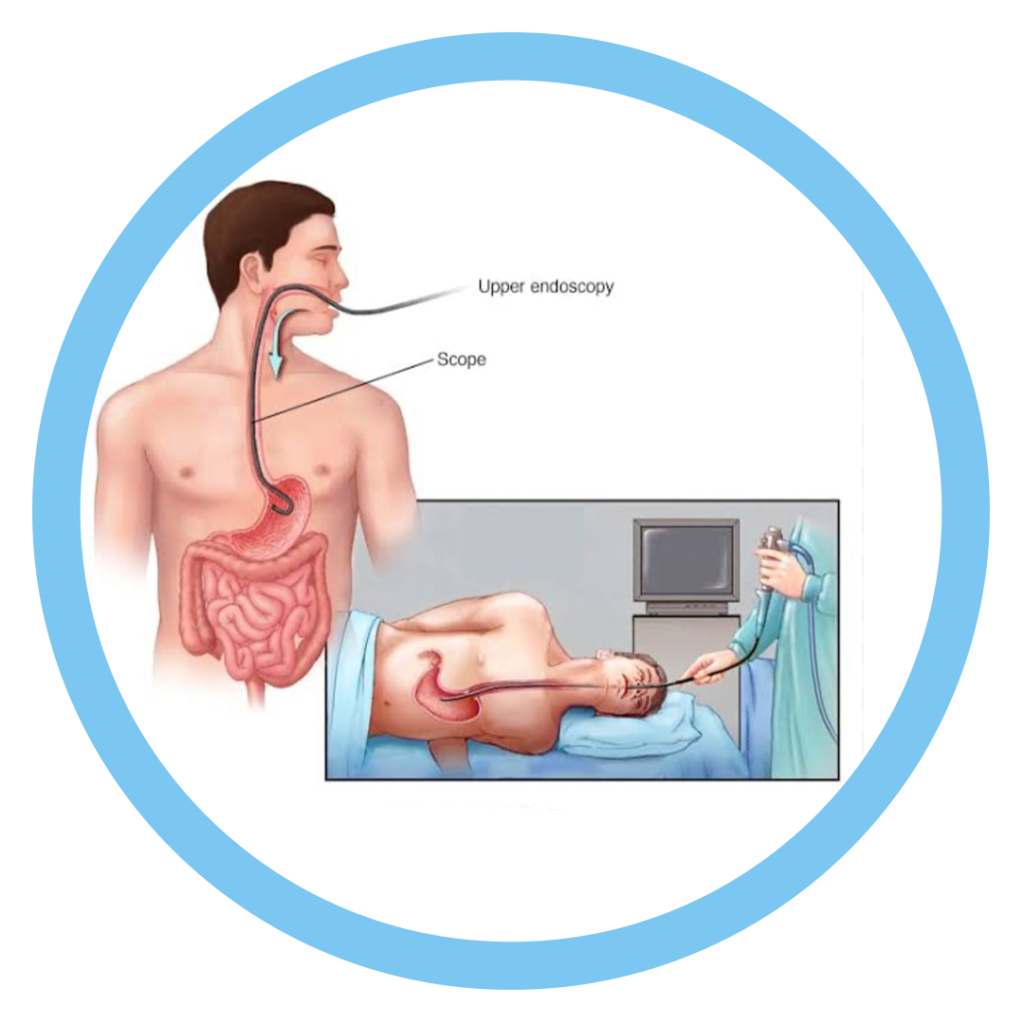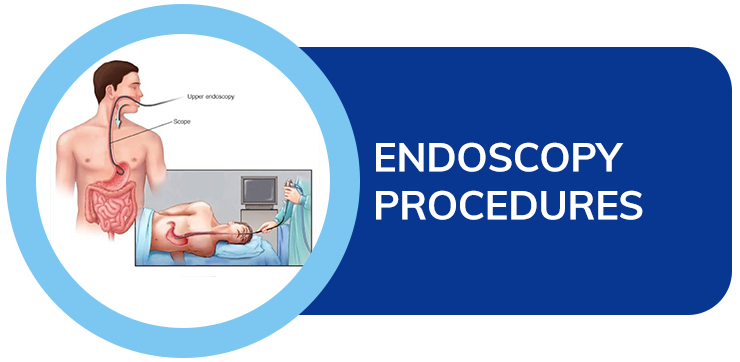
An endoscopy is a non-surgical procedure in which your doctor uses specialized instruments to view and operate on the internal organs and vessels of your body. In this procedure the surgeon uses a long, thin and flexible tube called the endoscope, which has a light and camera attached to it to see inside the body. The camera captures coloured images of the internal organs of the body and displays it on a monitor to be viewed by the doctor. The minimally-invasive endoscopy procedure involves inserting the endoscope into an opening of the body, such as the mouth, the nostrils or the anal cavity.

An endoscopy is a non-surgical procedure in which your doctor uses specialized instruments to view and operate on the internal organs and vessels of your body. In this procedure the surgeon uses a long, thin and flexible tube called the endoscope, which has a light and camera attached to it to see inside the body. The camera captures coloured images of the internal organs of the body and displays it on a monitor to be viewed by the doctor. The minimally-invasive endoscopy procedure involves inserting the endoscope into an opening of the body, such as the mouth, the nostrils or the anal cavity.
The doctor may perform an endoscopy if you’re having symptoms of any of the following conditions:
The doctor will review your symptoms, perform a physical examination, and possibly order some blood tests prior to an endoscopy. These tests will help the doctor to gain a more accurate understanding of the possible cause of your symptoms. These tests may also help them determine if the problems can be treated without endoscopy or surgery.
An Endoscopy is usually needed:
The doctor may perform an endoscopy if you’re having symptoms of any of the following conditions:
The doctor will review your symptoms, perform a physical examination, and possibly order some blood tests prior to an endoscopy. These tests will help the doctor to gain a more accurate understanding of the possible cause of your symptoms. These tests may also help them determine if the problems can be treated without endoscopy or surgery.

Endoscopy is a nonsurgical procedure used to examine a person’s digestive tract. The procedure uses a long, thin and flexible tube called the endoscope, which has a light and camera attached to it. The camera captures coloured images of the interior of the organs or the body cavity and displays it on a monitor to be viewed by the doctor. The minimally-invasive endoscopy procedure involves inserting the endoscope into an opening of the body, such as the mouth, the nostrils. We perform our own Endoscopies.

Colonoscopy is a test that allows your doctor to look at the inner lining of your large intestine (rectum and colon). He or she uses a thin, flexible tube called a colonoscope to look at the colon. A colonoscopy helps find ulcers, colon polyps, tumors, and areas of inflammation or bleeding.

ERCP is a procedure that enables your physician to examine the pancreatic and bile ducts. A bendable, lighted tube (endoscope) about the thickness of your index finger is placed through your mouth and into your stomach and first part of the small intestine (duodenum).
Best Bariatric Surgeon
Best bariatric surgeon in Punjab
Best bariatric surgeon in Moga
Best bariatric surgeon in Jalandhar
Best bariatric surgeon in Chandigarh
Best bariatric surgeon in Bathinda
Best bariatric surgeon in Amritsar
Best bariatric surgeon in Ferozepur
Best bariatric surgeon in Faridkot
Best bariatric surgeon in Jammu
Best weight loss surgeon
Top Bariatric Weight Loss Surgeon In Ambala
Weight Loss Surgery In Patiala
Best Weight Loss Surgery In Bathinda
Best weight loss surgeon in Moga
Best weight loss surgeon in Ludhiana
Best weight loss surgeon in Jalandhar
Best weight loss surgeon in Chandigarh
Best weight loss surgeon in Bathinda
Best weight loss surgeon in Amritsar
Best weight loss surgeon in Ferozepur
Best Weight Loss Surgery Hospital in Punjab
Important Links
About Dr. Amit Sood – Best Bariatric Surgeon
Contact Us
FAQ’S
Blogs
Ckosmic Health City
G.T. Road, Moga, Punjab, 142001
P. (+91) 73411-01891
P. (+91) 73411-01892
Important Links
About Dr. Amit Sood – Best Bariatric Surgeon
Contact Us
FAQ’S
Blogs
Ckosmic Health City
G.T. Road, Moga, Punjab, 142001
P. (+91) 73411-01891
P. (+91) 73411-01892
Copyright © Designed and Developed By Ckosmic Health City